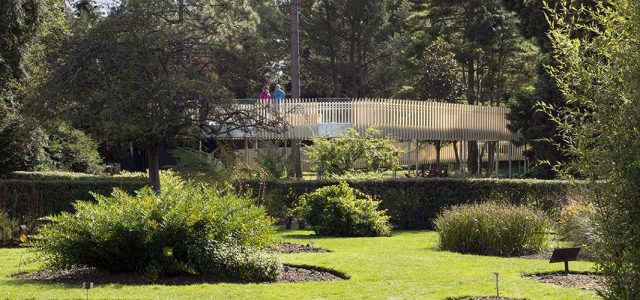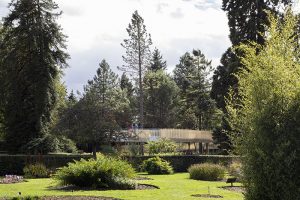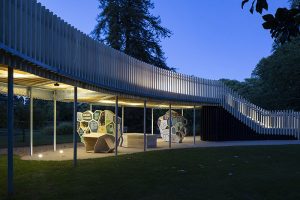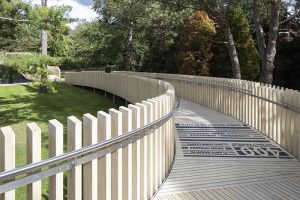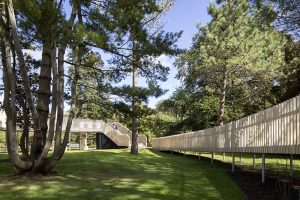
The 2019 Architecture Award winner is The Rising Path, completed by chadwick dryer clarke studio, a structure for Cambridge University Botanic Garden.
A dynamic spiral, the 96-metre long Rising Path features an interpretation hub and 3-metre high elevated viewpoint, designed to inspire visitors to explore the Garden’s Systematic Beds with fresh eyes and greater knowledge.
In the summer of 2016, chadwick dryer clarke studio was invited to participate in an limited design competition held by the Botanic Garden and University of Cambridge Estates.
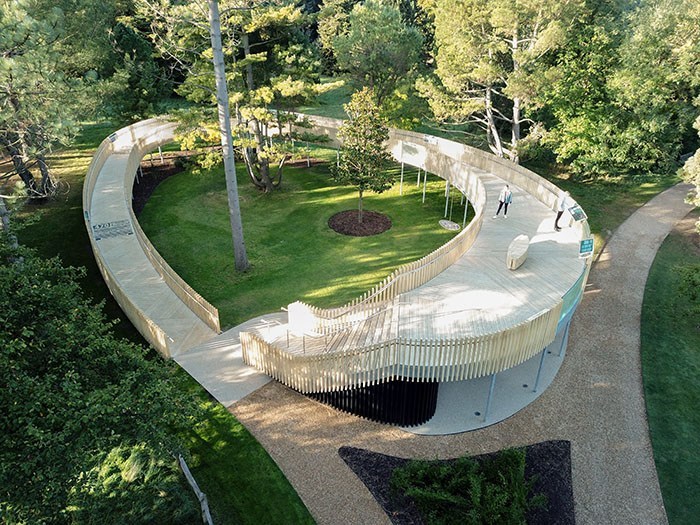
“Our challenge to the architects was to design an imaginative structure that played on the unique character of our historic landscape and outdoor, living collection of plants. With the Rising Path, they have succeeded in creating just the kind of intriguing, memorable and uplifting experience we were after.” Professor Beverley Glover, Director of the Botanic Garden
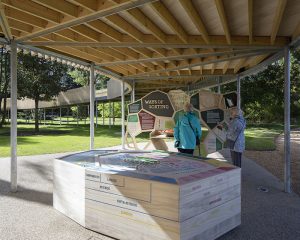
The winning solution, which was a collaboration with structural engineers Smith and Wallwork, provides an accessible viewing platform overlooking the systematic beds, with an exhibition area below.
Situated to the south of the Systematic Beds, the Rising Path has been devised as a gently sloping path that leads off from the established path network. The journey along and up the spiral path takes you through the maturing conifer collection of the New Pinetum.
The landings are nodes along the path explaining plant evolution and family development using graphic text on the decking and information panels.
“It is a privilege to be asked to design a structure within the special and beautiful setting of the Botanic Garden. Mindful of the value of the collections around it, The Rising Path has an elegant curving form that provides a framework for furthering understanding of the Systematic Beds, as well as defining a stimulating new space in the Garden.” Robin Dryer, Director of chadwick dryer clarke studio
Arriving at the three-metre high viewpoint, visitors discover a stunning overview of the unique design of the Systematic Beds. The interpretation hub at ground level provides engaging displays drawn from the Garden’s archives to encourage visitors to explore the Systematic Beds. The green space enclosed by the Rising Path provides a group briefing space and area for public events.
The shape of the structure is a irregular spiral developed from a circular plan. Its distortion and rotation is a result of the structure avoiding tree roots, trunks and the University data infrastructure.
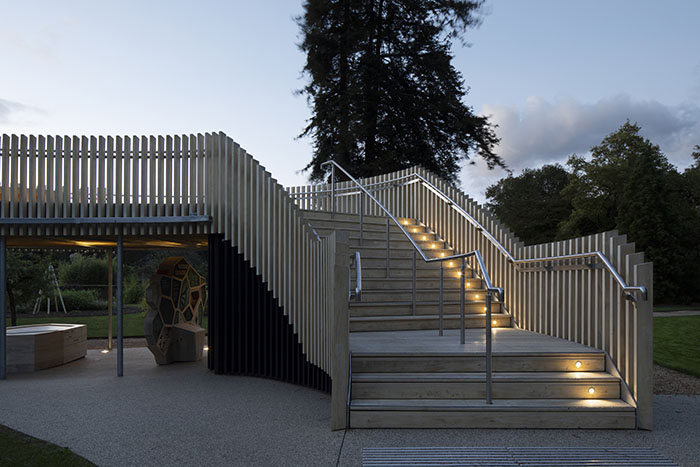

The structural frame is formed from galvanized steel with principal members made from laser cut curved 10mm plates. The curved stringer has changing different radii throughout the sweeping ellipse. The 90mm CHS columns are fixed to concrete free specialist hand driven steel pile footings by Surefoot.
These enable the foundations to be positioned close to the trees and within the root protection zones.
The timber decking and cladding of the Rising Path is in Accoya timber, selected for its durability and stability. Accoya is modified Radiata Pine, a species which coincidentally grows adjacent to the new structure.
“We are thrilled to be opening the Rising Path to the public. This innovative structure is a key part of an ongoing project to re-examine, re-interpret and re-display our Systematic Beds which will help visitors, students and scientists to understand more about plants, how they are related, and why this is so important for science.” Professor Beverley Glover
A collaboration between Gripsure, (the manufacturer of the timber decking), chadwick dryer clarke and Designmap have resulted in bespoke supergraphic text at the landings. This was the first time the decking had been used in this way with the text routed into the accoya and filled with antislip resin.
Images © Richard Chivers
Read more about the architecture award category.

